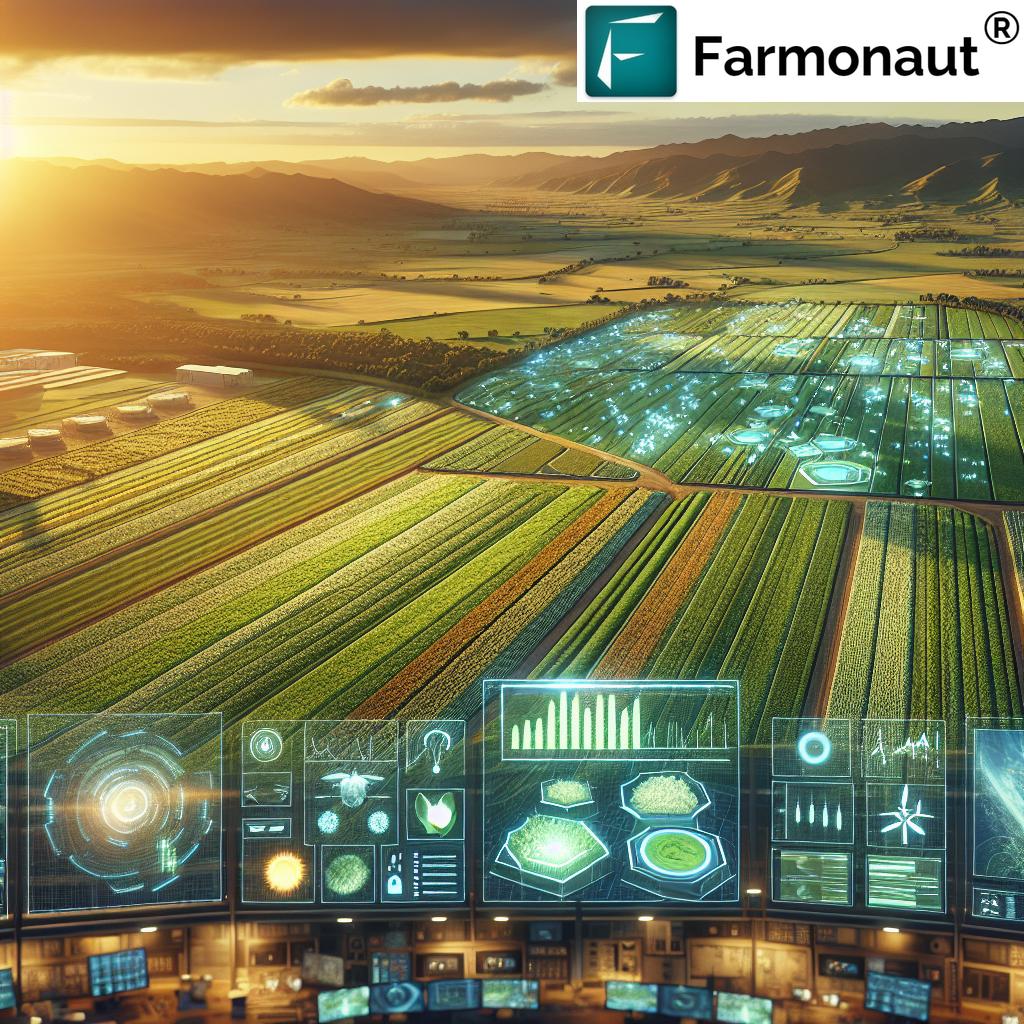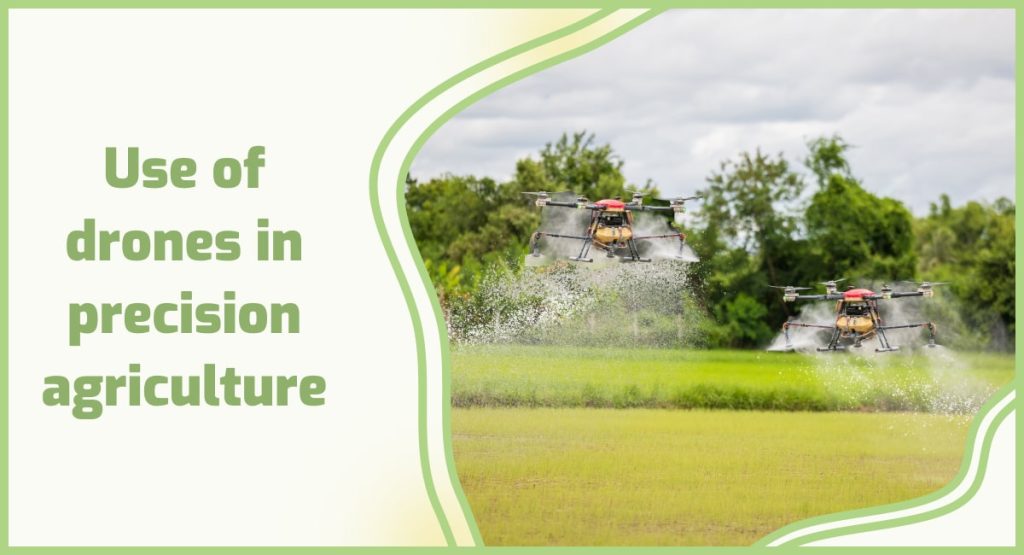Imagine effortlessly optimizing your farming operations while sipping your morning coffee. Sounds like a dream, right?
With drones for precision crop management, this dream can become your reality. These flying wonders aren’t just for capturing stunning aerial photographs; they’re revolutionizing agriculture, offering you the chance to manage your crops with unprecedented accuracy. Picture this: you’re able to monitor your fields in real-time, identify problem areas instantly, and even apply treatments exactly where they’re needed.
All this is possible with the precision and efficiency that drones bring to the table. By the end of this article, you’ll understand how integrating drones into your farming toolkit can save you time, reduce costs, and significantly boost your crop yields. Curious about how drones can transform your agricultural practices? Ready to learn how this cutting-edge technology can give you the competitive edge? Dive in and discover the incredible potential of drones in precision crop management. Your fields—and your future—will thank you.

Drones In Modern Agriculture
Drones offer precision in crop management, enhancing agricultural efficiency. They monitor plant health, assess soil conditions, and optimize resource use. Farmers gain valuable insights, helping them make informed decisions for better yields and sustainable practices.
Drones are rapidly transforming the landscape of modern agriculture. They offer a bird’s-eye view of fields and provide farmers with crucial data that was once difficult to obtain. With drones, you can achieve precision crop management, saving time and resources while boosting productivity.What Makes Drones Essential In Agriculture?
Drones can cover large areas quickly, delivering real-time data. This means you can spot issues like pest infestations or nutrient deficiencies before they become significant problems. Imagine being able to assess the health of your crops without stepping into the field. Their advanced imaging capabilities enable you to see what the naked eye cannot. Infrared cameras detect plant health, while multispectral sensors gauge crop vigor. This technology helps you make informed decisions that enhance yield and quality.How Drones Improve Crop Monitoring
Regular monitoring is key to successful farming. Drones make this easier by flying over fields and capturing detailed images. This allows you to track growth patterns and identify areas needing attention. By analyzing drone data, you can tailor your interventions. Apply fertilizers or pesticides precisely where needed, reducing waste and environmental impact. This targeted approach not only saves money but also supports sustainable practices.Boosting Efficiency With Drone Technology
Time is a valuable resource in farming. Drones allow you to survey large plots in a fraction of the time it would take on foot. This means more time for other important tasks, like planning and strategy. The automation aspect of drones minimizes manual labor. Imagine being able to program a drone to perform routine checks, freeing you up for other responsibilities. This efficiency can lead to increased productivity and profitability.Challenges And Considerations
While drones offer many benefits, they’re not without challenges. Weather conditions can affect their performance, and regulations may limit their use. Are you prepared to navigate these obstacles? Investing in drones also requires upfront costs and training. However, the long-term benefits often outweigh the initial investment. Consider how this technology fits into your overall farming strategy. Drones are more than just high-tech gadgets; they are practical tools that can transform your farming operations. Are you ready to embrace this technology and take your crop management to new heights?
Benefits For Crop Monitoring
Using drones for precision crop management offers significant benefits for crop monitoring. Drones provide real-time insights into crop health and growth patterns. They help farmers make informed decisions quickly. This technology is transforming the way agriculture is managed. Let’s explore the advantages of using drones for crop monitoring.
Improved Data Collection
Drones collect high-resolution images from above. They capture detailed views of large areas in a short time. This helps farmers see problems early. Spotting issues like disease or pests becomes easier. Early detection leads to faster solutions and better crop health.
Efficient Resource Management
Drones help manage resources effectively. They track water usage and soil conditions. This ensures water and nutrients reach the right places. Efficient resource use reduces waste and lowers costs. It supports sustainable farming practices.
Enhanced Yield Predictions
Drones improve yield predictions with accurate data. They analyze plant growth and estimate future yields. This helps farmers plan harvests better. Knowing potential yields aids in financial planning and market strategies.
Time And Cost Savings
Using drones saves time and money. Traditional methods require more labor and time. Drones cover fields quickly and with less effort. They reduce the need for manual inspections. This efficiency cuts operational costs significantly.
Data Collection And Analysis
Data collection and analysis are critical in precision crop management. Drones have transformed how farmers gather and interpret data. This technology allows precise monitoring, helping farmers make informed decisions. By using drones, farmers can quickly access detailed insights into their fields.
Data Collection With Drones
Drones equipped with cameras and sensors fly over fields. They capture high-resolution images and data. This process is faster and more efficient than traditional methods. Farmers can cover large areas in a short time. Drones provide an aerial view, showing crop health, growth patterns, and any anomalies.
Types Of Data Collected
Drones collect various types of data. This includes visual, thermal, and multispectral data. Visual data shows the field’s current state. Thermal sensors detect temperature variations. Multispectral cameras capture data beyond visible light. This data helps identify issues like pest infestations or water stress.
Data Analysis Techniques
After data collection, analysis begins. Software processes the data, creating detailed maps and reports. These tools help farmers understand the data easily. Patterns and trends become visible. Farmers can spot problems early and plan effective solutions.
Benefits Of Drone Data Analysis
Drone data analysis offers many benefits. It allows for early detection of crop issues. Farmers can address problems before they worsen. This leads to healthier crops and higher yields. Efficient data analysis saves time and resources. It helps optimize farm management strategies.
Challenges And Considerations
While beneficial, drone data analysis has challenges. Weather conditions can affect data accuracy. Proper training is essential for effective drone use. Farmers must understand data interpretation to make informed decisions. Despite challenges, the benefits often outweigh the drawbacks.

Challenges And Future Prospects
Precision crop management with drones faces challenges like battery life and data accuracy. Future prospects include improved technology and expanded applications, potentially transforming farming practices for efficiency and sustainability.
Precision crop management using drones is rapidly transforming agriculture. Yet, this innovative approach is not without its hurdles. As technology advances, the future prospects are promising, but several challenges must be addressed to harness the full potential of drones. Below, we explore the key challenges and what the future might hold for drone-assisted farming.Challenges In Drone Technology
One significant obstacle is the cost. Drones equipped with advanced sensors can be expensive, making them less accessible to smaller farms. You might wonder, is it really worth the investment for your farm? The answer often depends on the scale and type of crops you manage. Additionally, technical expertise is required to operate drones effectively. Not every farmer is a tech enthusiast. This can lead to a reliance on external services, increasing operational costs.Regulatory Hurdles
The use of drones in agriculture is subject to strict regulations. These can vary widely by region, complicating matters for farmers. Have you ever thought about how these rules might impact your ability to use drones on your farm? Navigating these regulations can be a daunting task. Privacy concerns also arise, especially if your farm is near residential areas. Ensuring you comply with privacy laws is crucial.Environmental Factors
Weather conditions can significantly impact drone operations. High winds or rain can make flying drones risky or impossible. Imagine planning a crucial crop survey, only for bad weather to ground your drones. This unpredictability can affect timely decision-making. Battery life is another concern. Limited flight time can restrict the amount of land you can cover in one session.Future Prospects
Despite these challenges, the future of drones in agriculture is bright. Advances in technology are continually lowering costs and improving functionality. Picture drones that can operate autonomously, analyzing data in real-time to provide actionable insights on crop health. This could drastically reduce the need for manual labor. Machine learning and AI integration promise to enhance precision agriculture. Could drones soon become the norm for farms worldwide? The potential is immense.Practical Steps Forward
To overcome these challenges, collaboration is key. Farmers can work with tech companies to develop affordable, user-friendly drone solutions. Have you considered joining a farming cooperative to share costs and expertise? This could make drone technology more accessible. Education and training are vital. Learning to operate drones effectively will empower you to maximize their benefits. In conclusion, while using drones for precision crop management presents challenges, the future prospects are exciting. By tackling these hurdles head-on, you can take advantage of cutting-edge technology to boost your farm’s productivity and sustainability.Conclusion
Drones simplify crop management with precision and efficiency. They deliver valuable data. Farmers can make informed decisions. This technology helps save resources. Reduces waste. Enhances yields. Drones offer new insights into crop health. They spot issues early. Address problems before they worsen.
This proactive approach boosts productivity. Keeps crops thriving. As technology advances, drone use will grow. It’s a smart investment for modern farming. Embrace innovation. Improve crop management. Ensure sustainable farming practices. Stay ahead in agriculture with drones. They are a powerful tool.
A step forward in farming technology.



